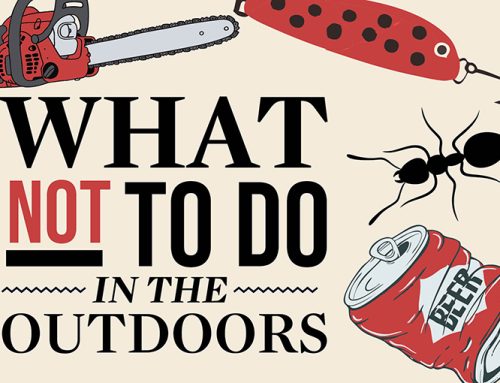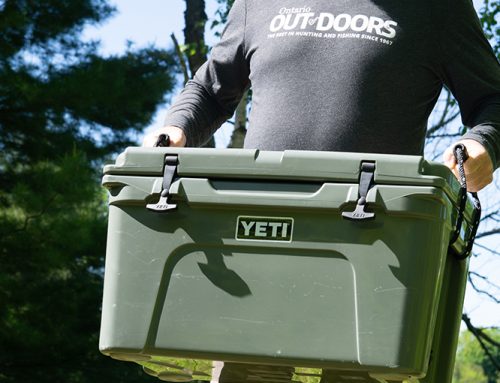
In the June 2019 issue, we wrote about brush busting. We wanted to find out if it was true that heavy bullets are great at cutting through cover. We tested several bullet calibres, weights, and speeds. We tested with the brush screen near the target and also near the muzzle.
What we found
In that column, we experienced “some” to “significant” deflection and bullet instability due to tumbling. The test where brush was placed close to the muzzle was especially bad.
One thing we didn’t test at the time was bullet fragmentation by shooting at ballistic gel blocks. So, that’s what we’ve now done.
The set-up
We set up with our .308 hunting rifle 50 metres from the target. We put our brush-screen one meter from the target, a block of ballistic gel. This brush screen was made of dowels with a 7/16-inch diameter. We used two offset rows of dowels so that all shots would hit something. We used 180- grain soft point bullets, and fired lengthwise into the standard FBI 16-inch gel block. Behind the gel, we had a ‘witness paper’ to show where the bullets went if they exited the block.
Shot 1
We shot through the dowels with the gel block placed about one metre behind. The bullet brushed two dowels (one in the front row and one in the back row). The bullet was fragmenting as it passed through the gel, with a stream of fragmentation about two inches in diameter. It hit the witness paper with approximately four to five inches of deflection from the initial bullet path, and the fragments were unstable, with the two main chunks leaving irregular holes.
Shot 2
We wanted to capture the bullet, so we set up two gel blocks end-to-end. (This put the first block closer to the dowels.) The conditions were otherwise the same as shot one. The bullet brushed two dowels (one in the front row and one in the back row). It went through the first block and was captured in the second block, about six inches into the gel. Again, the bullet was fragmenting as it passed through the gel. The bullet fragments that were captured in the second block appeared to be a piece of jacket and part of the lead core.
Shot 3
The first two shots begged the question…what’s “normal” for this bullet? So, we removed the dowel screen, and shot straight into the ballistic gel. The bullet penetrated the first block and was captured in the second. The entire wound channel was not impressive. As we have noted before, the 180- grain bullet from a .308 is not ideal.
What’s ideal? And what’s not?
The 180-grain bullet coming out of a .308 does not have enough velocity to expand properly. Therefore, it doesn’t produce a big enough wound channel and it penetrates too much without releasing its energy into the target.
In previous tests, we’ve shot 150-grain .308 hunting bullets into ballistic gel, which demonstrates the principles of effective bullet performance.
We want to see penetration appropriate for the animal being hunted. We want a massive release of energy in the vitals, characterized by a large cavity in the ballistic gel. To get the full effect of everything that the bullet has to offer, we want to see only a small amount of energy left as the bullet exits the animal’s vitals.
The 180-grain soft point didn’t offer this ideal result when shot directly into gel and was certainly worse when it traveled through brush before entering the gel.
The takeaway
You might be able to produce an effective hit on a close-range varmint when you shoot through brush with a .308. (For example, a coyote would very likely be effectively killed with such a shot.) However, when it comes to game (deer, moose, bear), the likely possibility of a wounding shot makes it unethical.
Outdoor Life’s Andrew McKean describes deflection, tumbling, and fragmentation tests he performed in a 2014 blog entry.
He tested both red-willow brush and grasses with .308, .223, and 25/06 ammo and came to the same conclusion as us: “Don’t trust your bullet to remain intact and on course if it encounters any obstacle. Wait for a clear shot.”
Originally published in Ontario OUT of DOORS’ 2022-2023 Hunting Annual






Leave A Comment